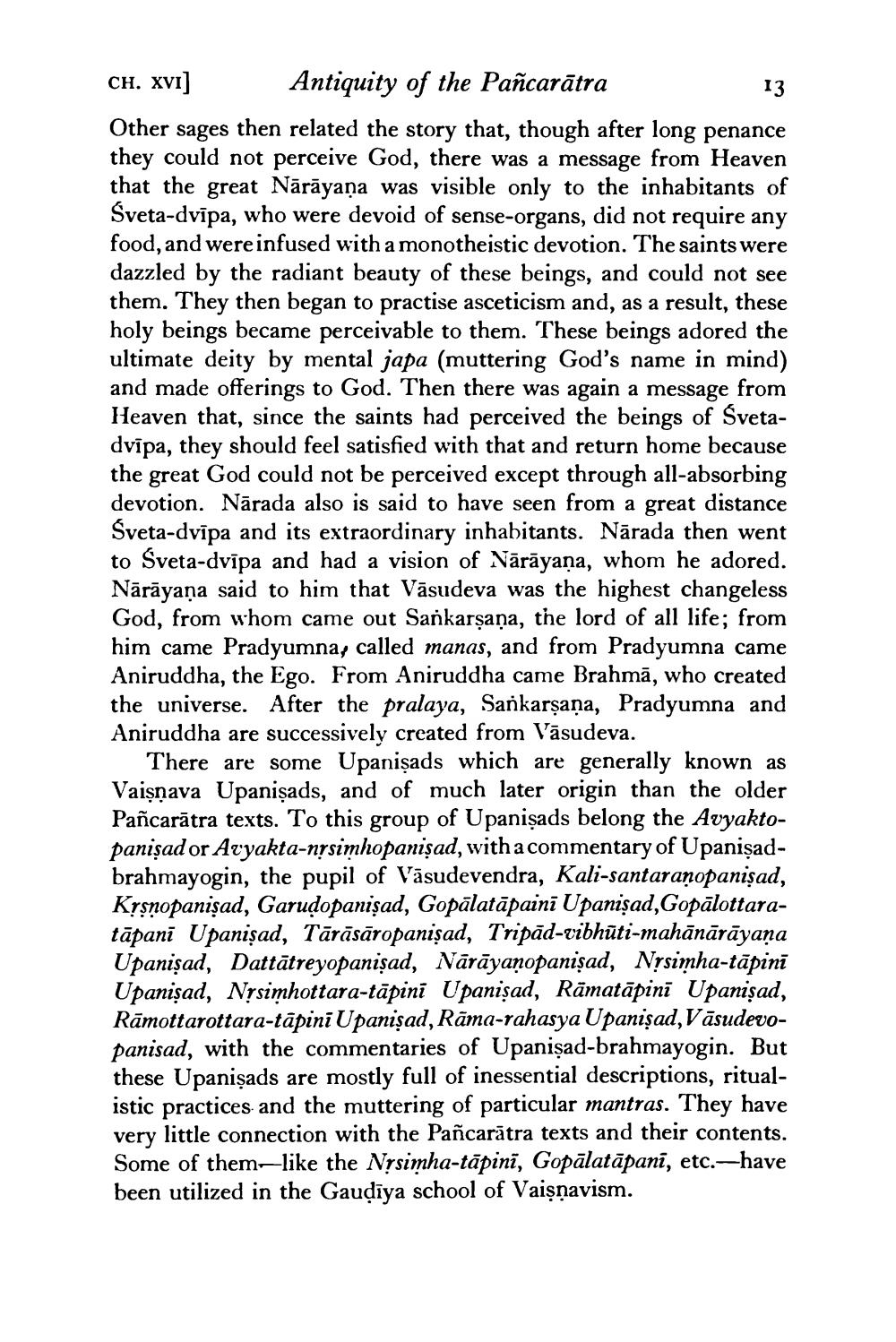________________
CH. XVI] Antiquity of the Pañcarātra
13 Other sages then related the story that, though after long penance they could not perceive God, there was a message from Heaven that the great Nārāyaṇa was visible only to the inhabitants of Sveta-dvīpa, who were devoid of sense-organs, did not require any food, and wereinfused with a monotheistic devotion. The saints were dazzled by the radiant beauty of these beings, and could not see them. They then began to practise asceticism and, as a result, these holy beings became perceivable to them. These beings adored the ultimate deity by mental japa (muttering God's name in mind) and made offerings to God. Then there was again a message from Heaven that, since the saints had perceived the beings of Svetadvīpa, they should feel satisfied with that and return home because the great God could not be perceived except through all-absorbing devotion. Nārada also is said to have seen from a great distance Sveta-dvīpa and its extraordinary inhabitants. Nārada then went to Sveta-dvīpa and had a vision of Nārāyana, whom he adored. Nārāyaṇa said to him that Vāsudeva was the highest changeless God, from whom came out Sankarşaņa, the lord of all life; from him came Pradyumna, called manas, and from Pradyumna came Aniruddha, the Ego. From Aniruddha came Brahmā, who created the universe. After the pralaya, Sankarşana, Pradyumna and Aniruddha are successively created from Vāsudeva.
There are some Upanişads which are generally known as Vaisnava Upanişads, and of much later origin than the older Pañcarātra texts. To this group of Upanişads belong the Avyaktopanişad or Avyakta-nrsimhopanişad, with a commentary of Upanişadbrahmayogin, the pupil of Vāsudevendra, Kali-santaranopanişad, Krsnopanışad, Garudopanışad, Gopālatāpainī Upanişad, Gopālottaratāpanī Upanişad, Tārāsāropanişad, Tripād-vibhūti-mahānārāyaṇa Upanişad Dattātreyopanişad, Nārāyaṇopanışad, NȚsimha-tāpinī Upanişad, NȚsimhottara-tāpini Upanişad, Rāmatāpinī Upanişad, Rāmottarottara-tāpini Upanişad, Rāma-rahasya Upanişad, Vāsudevopanisad, with the commentaries of Upanişad-brahmayogin. But these Upanişads are mostly full of inessential descriptions, ritualistic practices and the muttering of particular mantras. They have very little connection with the Pañcarātra texts and their contents. Some of them like the Nysimha-tāpini, Gopālatāpanā, etc.—have been utilized in the Gaudīya school of Vaisnavism.




